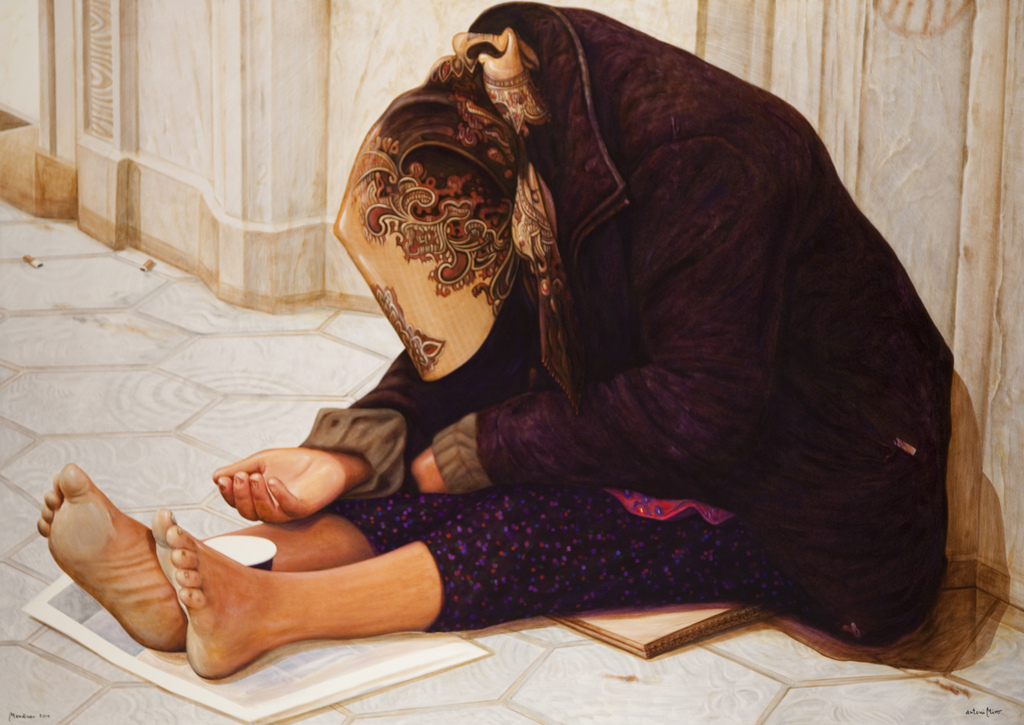Mendicar (Begging)
Isabel-Clara Simó, speaking about how Antoni Miró looks at reality when beginning his works, highlighted three kinds of transformation. The second of these is the artist’s quest to ‘rescue’ reality from “everyday life, which renders objects and people opaque”. The great economic crisis unleashed in 2008 made the fringes of society invisible. Miró uses his painting to reveal what has been hidden.
We must recall that 2010 was when cuts in Spain’s social spending began to be made. After two years of a deep economic crisis, inequality was becoming increasingly more pronounced. The impoverishment of the Middle Classes was patent and poverty took hold of many households, which caused many people to become homeless.
Asking for alms was the only recourse for many, and the sight of beggars sitting on the pavement looking for charity became commonplace. This is the case of the woman depicted in this painting (women usually come off worst when things are bad). She is probably an immigrant caring for small children. She uses the most common gesture to ask for help, that which interpellates the fellow citizen. Josep Sou bravely notes that this gesture tends to repel rather than attract when one is “invited by the artist to listen to the voice of silence”.
She hides her face in shame and lifts the palm of her right hand asking for coins to be deposited in the paper beaker between her legs. Her clothing, and the cardboard and the newspaper under her feet make it clear that this is Winter. Even so, she is bare-footed because she knows this will help boost the day’s takings. The harshness of the scene tugs at the artist’s heartstrings and makes him denounce this situation.
The contrast between the clarity of the background (a light modular pavement and a bottom part with beige stone) and the dark tones of the figure’s clothing is heightened in the image, and the details are well-defined. The textures, the prints, the folds in the coat and the rest of the additional details are all rendered with a certain degree of solemnity, as if to pay some respect to the beggar.
Romà de la Calle notes that Miro’s explicit desire has always been to “expose facts” in his pictorial work, but together with a wider criticism. In this case, the criticism is that of “the globalisation of the universal poor” referred to by Wences Rambla in his discussion of the artist’s intense career.
Santiago Pastor Vila
